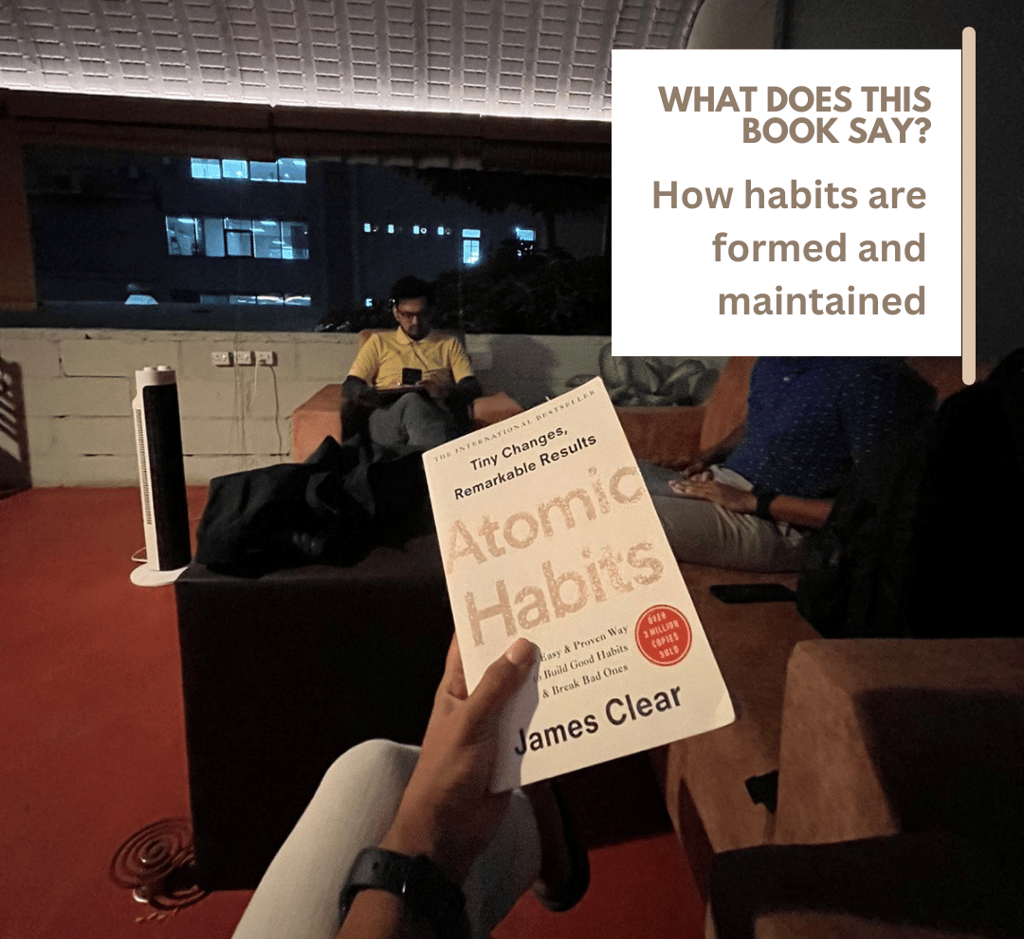Book: Atomic Habits
Author: James Clear
BOOK DISCUSSIONS
12/1/20223 min read


Introduction
The discussion started with the self-introductions of the participants. After the introductions, the session was handed over to the day’s discussant, Gautam.
Gautam started by narrating why he chose the book. The inquisitiveness of ’how humans operate’ pushed him to read ’Atomic Habits.’ Gautam asked each of the participants about a habit they had recently cultivated and one they wanted to cultivate but failed.
Responses of participants
Sketching is a habit that I failed to continue. Jogging is something I recently started.
I want to cultivate a habit of waking up early. Workout is my recent habit development.
Waking up early and blogging are two habits I want to cultivate.
I want to cultivate the habit of practising dance, and the recent habit that I developed is waking up early
Singing is something I want to bring back as a habit.
Meditation is one thing that I want to cultivate as a habit. A recent habit is the workout.Waking up early and Running are two that I want to bring back as my habits. Photography is my recent habit development.
Summary of the Book
Now that we have listed our habits, let's see how this book helps us. The book is divided into 20 chapters and 5 sections. I would be delving more into the first section - ’Fundamentals,’ and providing a brief on the book’s other sections.
Fundamentals:
When a habit is started, the building up of it follows a logarithmic curve. We will face a lot of difficulties. This book tells us how to cultivate a habit amidst all these difficulties. There is a good difference between a habit and a goal. When I decided to be a marathon runner, I had to practice running for 42 km. I had to practice by fixing my targets. When I fix my goal as 10km, after achieving the goal, I would leave running behind. However, after achieving the goal of finishing a marathon, I no longer felt happy about finishing the marathon. But I liked the process of running more than finishing the 42 km target. Now running is my habit. The book talks about how the habit should be process-oriented but not goal-oriented, with which I completely agree.Identity Shapes your habits”
Your definition of yourself will impact the habit-building process.Every habit will have a queue.
For example, when we decide to go to the gym in the morning, the queue would be sorting the gym wear and shoes the previous night. Because of the queue, we will be encouraged to go to the gym as soon as we get up in the morning. The process of cue follows: Craving (do something that will push/encourage you), response, and Reward (incentivise). Also, habits should be stacked to make a lifestyle.There are five laws to build a habit.
Making it Obvious
Making it Attractive Joining a cult/culture consisting of people with traits or habits you want to cultivate will help you advance your habit-building process. In addition, the environment around you will influence your habit-building process. So be careful about your environment.
Joining a similar group or changing the environment will make the new habit attractive.Making it Easy
In order to make the task of building habits easy, break the task into small bits. This has been explained by the driving school experience.Satisfy
Perform at the edge of it! For example, I periodically increased my running distance when I started my marathon running training. It is important here to know your limits. I can't decide to run 10km in 10 days. I had the goal of reaching 5 km run in a week, and then pushed myself to run 6km instead of 5. I did not run more than that. If I had done that, I might have probably injured myself. In this context, for me, it was important to know my limits and slowly push them.
I will be satisfied if I run more than 5km but tired if I run 10 km.
Discussion
The discussion was interwoven with the topic rather than held as a separate segment, as the subject was broad and naturally integrated into the conversation.
One perspective shared was that punishment might not be an effective substitute for rewards when trying to cultivate a habit. For instance, in attempting to quit smoking and take up jogging, adding extra running distances as a “penalty” for smoking did not produce results even after two years. Another viewpoint suggested reframing such extra distances as a reward for jogging rather than as a punishment for smoking. Over the course of the exchange, it was realised that this approach was mixing a goal (quitting smoking) with a process (jogging).
The discussion also touched upon the idea that having a clear self-definition is important when pursuing goals, drawing parallels with advice from Law of Success by Napoleon Hill, which advocates thinking of oneself as having already achieved the desired goal.
Examples were given of how personal experiences, such as enjoying travel, can inspire the cultivation of habits centred on the process itself rather than solely the outcome. A question was raised on how habits, when defined as processes, can actually be cultivated. The group concluded that while a goal can be set to guide the process of forming a habit, the habit itself should ultimately be rooted in the process of doing rather than the end result.
